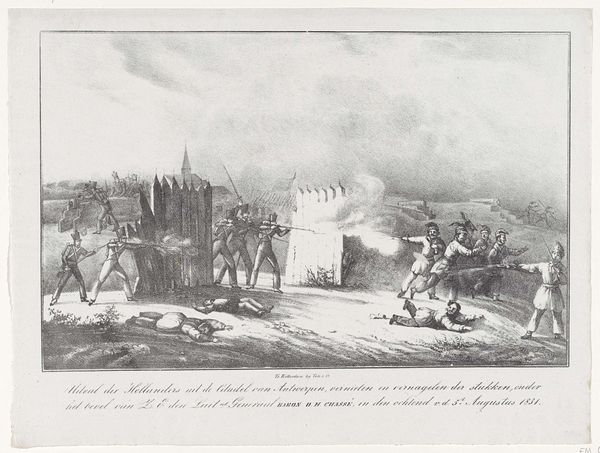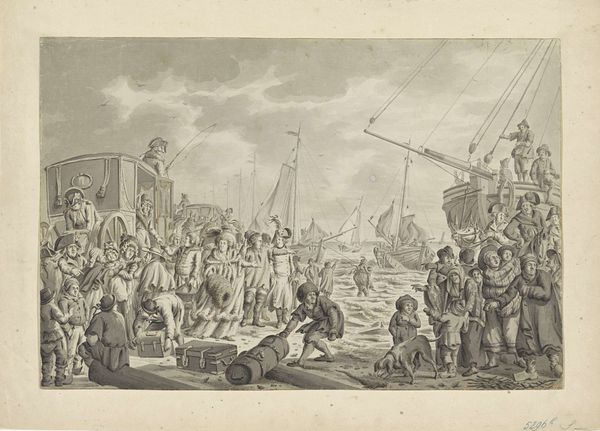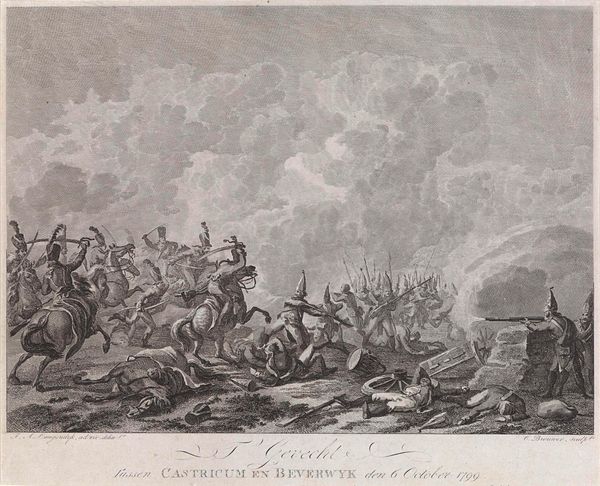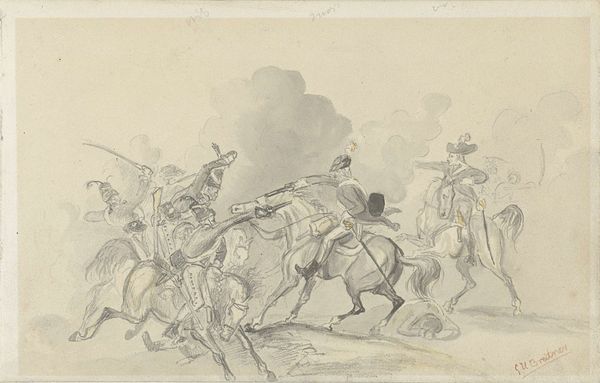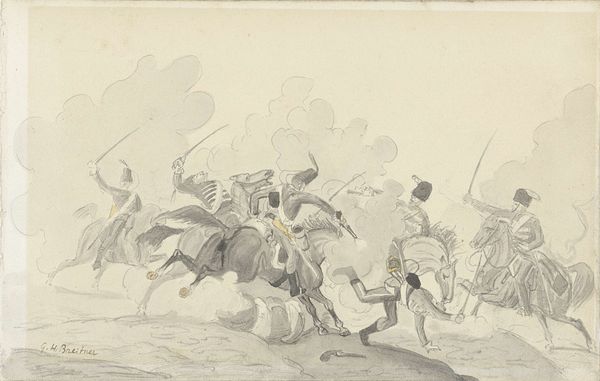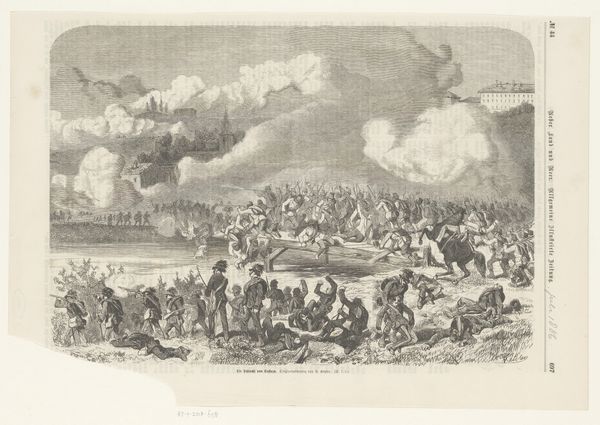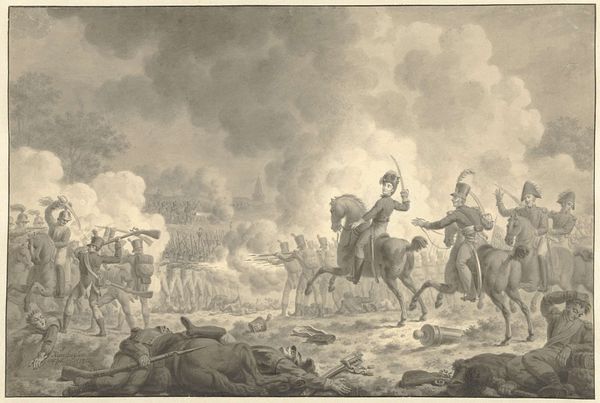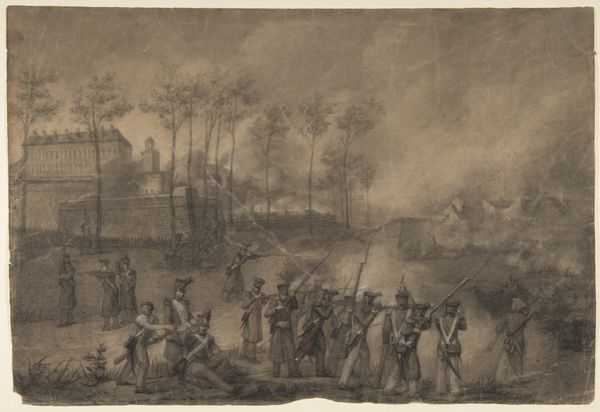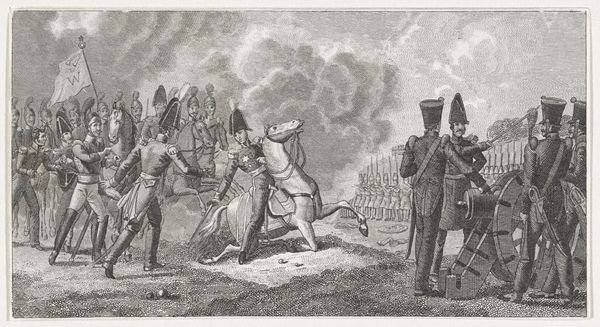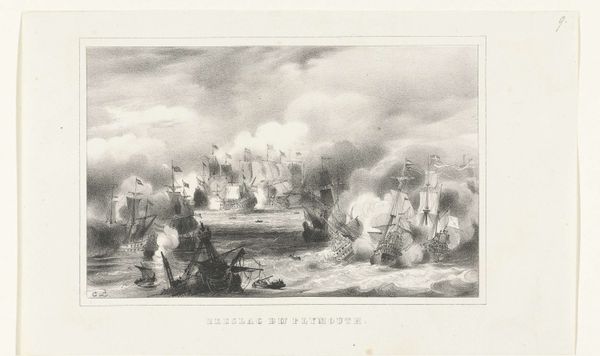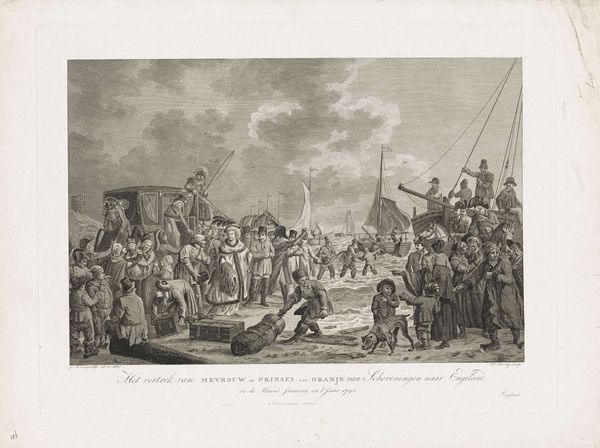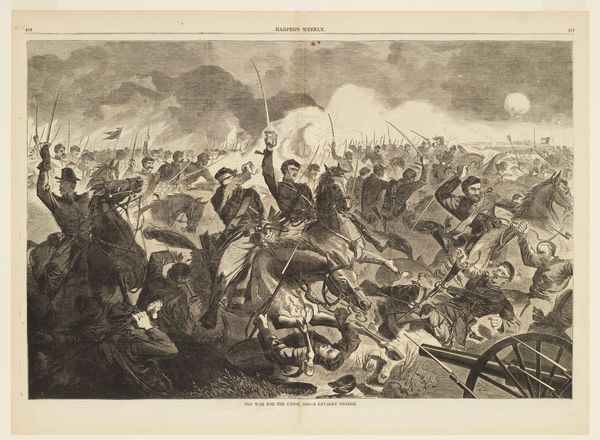
drawing, etching, ink
#
drawing
#
narrative-art
#
etching
#
pencil sketch
#
ink
#
romanticism
#
history-painting
Dimensions: height 181 mm, width 279 mm
Copyright: Rijks Museum: Open Domain
Johannes Jelgerhuis captured the Bombardment of Vlissingen by the British in 1809, in this drawing now held at the Rijksmuseum. Here, the stark symbolism of war is embodied in the large cannon, an updated version of the Roman war machines. It's an instrument of destruction and a representation of power and imperial reach, similar to the Roman aqueducts and roads as symbols of dominance. Throughout history, the iconography of warfare has seen the cannon evolve, reflecting shifts in technology, the changing face of conflict, and the collective psyche of cultures. This weapon appears across various media, not just as a literal depiction but also as a metaphor for overwhelming force or societal change. The subconscious appeal to power and control is evident. The smoke, the destruction, and the carefully posed figures speak to an underlying tension between the desire for order and the chaos of war. This cyclical return to destructive means underscores our complex relationship with power, conflict, and our deepest fears.
Comments
No comments
Be the first to comment and join the conversation on the ultimate creative platform.

